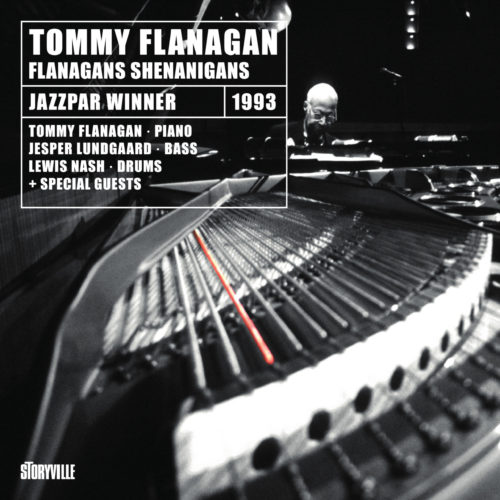Tommy Flanagan was known for his tasteful, flawless and swinging piano playing. He added class to every session that he was involved with and fortunately it was well documented during the latter part of his career. Solo Piano was not initially released until decades after its 1974 recording. It is significant historically because this outing was the pianist’s first recording as a leader in 13 years and, most importantly, because it is very good music.
Until the long delayed release of Solo Piano, it was believed that Tommy Flanagan’s “comeback” began with 1975’s The Tokyo Recital for the Pablo label and that his only full-length album of unaccompanied piano solos was 1977’s Alone Too Long which was released by Denon in Japan. Solo Piano forced a slight readjustment of the jazz history books and, most importantly, offers listeners some very enjoyable music from the great pianist. It also includes a few surprises, particularly for those listeners who think of Flanagan as primarily a bop stylist.
When swing was succeeded by bop as jazz’s modern mainstream, the function of the piano changed from being a timekeeper to take part of the rhythm section. While the pre-1945 styles of jazz piano had the pianists keeping time with his or her left hand, usually by striding back and forth between bass notes and chords, in bebop that role is usually handled by the string bassist. Bop pianists use their left hands to hit chords on a more unpredictable basis, accenting beats like a drummer “dropping bombs,” while their right plays hornlike lines.
That approach works perfectly in trio settings but can leave some pianists sounding incomplete when taking unaccompanied solos. Bud Powell, the leader in the field, was able to imply the beat and slightly adjust his style when playing solos. In the case of Tommy Flanagan, his ability to play swing was a major asset and in a solo setting he often added a modified stride, as can be heard on his version of “Sleeping Bee.”
On swing-oriented numbers such as “Isn’t It Romantic,” “Sleeping Bee” and “Yesterdays,” Flanagan always kept the melody close by even while creating improvised variations. One never has a problem knowing where the pianist is for he builds his improvisations off of the melody rather than simply discarding the theme in favor of jamming over its chord changes. He follows those classic songs with an infectious version of “Stompin’ At The Savoy” that manages to sound both vintage and modern.
To conclude the enjoyable program, Flanagan performs a song apiece by three great composers of the bebop era (Dizzy Gillespie’s “Con Alma,” Tadd Dameron’s “If You Could See Me Now,” and Thelonious Monk’s “Ruby, My Dear”) before ending the set with a joyful rendition of “Lover.”
By the time Tommy Flanagan left Ella Fitzgerald’s backup band in 1978, his series of trio recordings had reminded the jazz world that he was a brilliant and very musical pianist. He worked steadily during the next 23 years, touring Europe and Japan while being based in New York and remaining one of the most consistently satisfying of all jazz pianists. Flanagan passed away on Nov. 16, 2001 at the age of 71 but he has never been forgotten. Tommy Flanagan is remembered with love, respect and admiration for his playing and his classy nature. Solo Piano adds to his impressive musical legacy.



